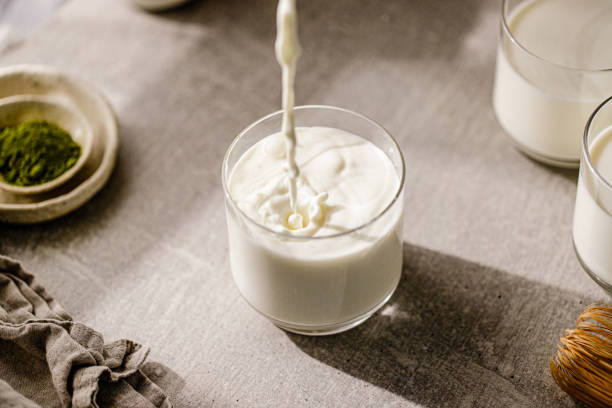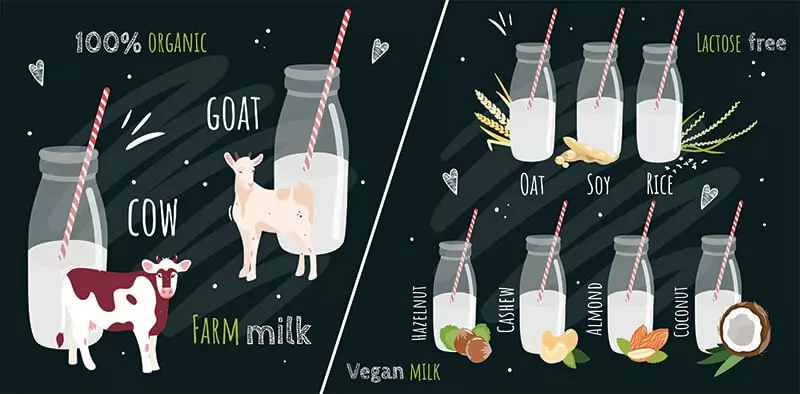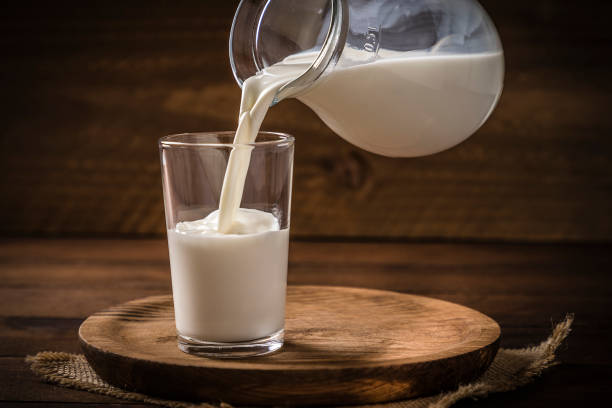
Introduction:
Milk has been a staple food in human diets for centuries, playing a significant role in various cultures and cuisines around the world. It serves as a source of essential nutrients and has been associated with numerous health benefits. However, the consumption of milk has also been the subject of debates and controversies due to concerns about hormones, antibiotics, environmental impact, and ethical considerations. This comprehensive exploration will delve into the historical perspective, nutritional composition, health benefits, types of milk, controversies, consumption throughout the lifespan, cultural significance, and considerations for making informed choices regarding milk consumption.
Historical Perspective of Milk Consumption:

The consumption of milk dates back to ancient times, where it was primarily derived from domesticated animals like cows, sheep, and goats. It played a crucial role in early human societies, providing a consistent source of nutrition, especially in regions where other food sources were scarce. The transition from solely relying on breast milk to consuming animal milk marked a significant shift in human dietary patterns.
Nutritional Composition of Milk:

Milk is a rich source of essential nutrients such as calcium, vitamin D, protein, and various vitamins and minerals. The composition can vary based on factors like the animal’s diet, breed, and processing methods. Cow’s milk, for instance, contains a balanced combination of macronutrients and micronutrients that contribute to overall health.
Health Benefits of Milk Consumption:

Milk consumption has been linked to several health benefits:
- Bone Health: Milk’s calcium content is vital for maintaining strong bones and preventing conditions like osteoporosis.
- Muscle Growth and Repair: The protein in milk supports muscle growth and recovery, making it a popular choice among athletes.
- Cardiovascular Health: The nutrients in milk, such as potassium and magnesium, may contribute to heart health.
- Weight Management: The protein and fat content in milk can aid in weight management by promoting satiety.
- Nutrient Absorption: Milk contains vitamin D, which enhances calcium absorption and supports immune function.
Types of Milk and Their Variations:
There are various types of milk available:

- Cow’s Milk: The most commonly consumed milk, available in different fat percentages (whole, skim, 2%, etc.).
- Plant-Based Milk Alternatives: These include almond, soy, oat, and coconut milk, suitable for those with dietary restrictions.
- Specialty Milk: Goat and sheep milk offer alternatives with unique flavors and nutritional profiles.
Lactose Intolerance and Milk Allergies:
Lactose intolerance, caused by an inability to digest lactose, and milk allergies, triggered by an immune response to milk proteins, can affect individuals’ ability to consume dairy products. Plant-based alternatives and lactose-free milk cater to these populations.
Milk Consumption Throughout the Lifespan:

- Milk for Infants and Children: Breast milk or formula is recommended for infants. As children grow, milk provides crucial nutrients for growth and development.
- Milk for Adolescents: Adolescents require calcium and vitamin D for bone development, making milk consumption important.
- Milk for Adults: Milk’s nutrient profile continues to benefit adults, supporting bone health, muscle maintenance, and overall nutrition.
- Milk for the Elderly: Elderly individuals may benefit from milk’s nutrients, helping prevent bone loss and frailty.
Role of Milk in Culinary Traditions:
Milk has a significant role in culinary traditions worldwide, used in various dishes such as cheeses, yogurts, desserts, and sauces. It adds flavor, texture, and nutritional value to a wide range of foods.
Making Informed Choices: Selecting and Storing Milk:

When choosing milk, consider factors like fat content, additives, and sourcing methods. Proper storage is essential to maintain freshness and prevent spoilage.

Conclusion:
Milk consumption has evolved over time, playing a pivotal role in human nutrition and culinary practices. While it offers a plethora of health benefits, controversies surrounding hormones, antibiotics, environmental impact, and ethics must also be acknowledged. Understanding these aspects empowers individuals to make informed choices about milk consumption, aligning with their health needs, dietary preferences, and ethical considerations. Whether consumed as a standalone beverage, added to recipes, or utilized in cultural traditions, milk remains a versatile and valuable component of diets worldwide.
